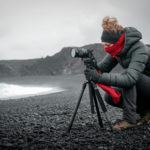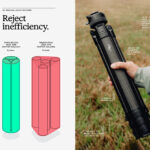It has been many years since I used to shoot portrait portfolios for Hollywood hopefuls, but many of the tricks I learned back then I have used ever since when shooting everything from people to bugs. Even if you never do a model shoot, all the tips in this list will help you in just about any situation you come across. In fact, using them on your friends first will give you great practice if you ever do shoot any models, and your friends will be even more impressed with the images you make for them.

Fairs are a great place to take “character shots” with all of the different costumes and characters found there, such as this Renaissance Fair maiden.
Personal Interests
Probably one of the best types of portraits are the ones that deal with the subjects’ own personal interests, such as hobbies. These can be done at their home if you know the person, or if you should both have the same interests they can use the items you work with at your home. Any subject of interest can be used even if you just make one up. All that is needed is that the model looks like they’re engaged in doing something of interest. Even a person sitting in a state of meditation can make a great image in the right environment.
Background
The second most important thing to consider is the background that you take the shot in front of. There is no end to what you can use here, and a lot of times all you really need to do is look at what’s around you. Try to find a background color that doesn’t match the person’s clothes or they will be lost in it. Don’t use something that has a strong contrast to their clothes unless that is the effect you’re after. Soft colors that compliment the person and their clothes work best. You can even make your own background with a dyed bed sheet, or just find a nicely painted wall to shoot in front of.
Candid vs. Posed
When it comes to portraits there are really just two types: candid and posed. I like candid best, as those have more of a personal feeling. They are also easier than having to deal with setting up a posed shot. For this work I like to use a medium telephoto lens, (105mm) so that I can give plenty of breathing room between the subject and myself. That also gives you more room to crop, more depth of field control, and if you use a flash, it will be easier to balance the light.
Props
Keep your subject busy while you are composing and shooting, by giving them something to do like using props, which can include another person, such as a child, or you could have them work on a hobby project, such as their garden. These types of props can also offer other things you’ll need to make a good shot, like a good background and plenty of room to work in. You can even shoot the person as they try something for the first time. These types of shots usually require a faster shutter speed to keep things sharp.
Character Shots
Character shots are my favorites, and I think the one type of portrait with the most feeling. “Characters” come in all forms—real or made-up. Maybe you’re going to shoot an actor friend, so get them to put on one of their stage costumes, or if you have a girlfriend who sews, just have her model her own designs. You both win in that case.
Location
At times, you may have a chance to shoot at places other than your normal ones, and work and play make two great alternatives.
Work place portraits are usually called environmental portraits, because they’re taken in the environment the person works in. Many of these can make super images when done in dramatic locations.
People at play can be just as good, and when done right can end up looking like pro sports shots.
Details
Most of the time we only think of portraits as being of the face, but other parts of the body, especially the hands, can tell just as much of a story, if not more, than a face can. Especially hands at work or play. For young hands, use some toys as props, and for weathered hands, use tools or some other object that also looks weathered, like an antique object. Don’t just think hands though, because even bare callused feet that look like they have never worn a shoe can work.
You may have noticed that many of these items can come together in the same settings, and all you need to do is recognize them so that you can then use them to make better portraits.
Native Dress
When on a trip, taking portraits of people in their native dress could be some of the best images you bring back. There are two ways of doing this.
First you can ask the person permission to take their picture, and then use a medium length lens so that you don’t crowd them.
Or if you cannot ask for permission, use a long lens to shoot them from a distance where they may not see you doing it, and maybe get some better candid shots that way. Always look for people in their native dress though, or else they may just end up looking like another tourist. Always ask permission whenever possible, though.
Kids
Kids are always a great portrait subject no matter if they are the center of interest or not. Kids at play are always a winning image, and two playing together is even better. Just about any toy will work, as long as it’s one they like to play with. Don’t miss out on good images of them when they’re asleep, because kids are the only people that look good even when asleep. If you won’t wake them up, this is also another good time to add a stuffed animal prop. We all see pictures of kids in the tub, but most of the time we do not think of taking our own pictures of them there.
Lighting
No matter what you shoot, or where you shoot it, you will most often need to think about adding some light to the subject in one way or another. The easiest way to do that if you’re outdoors is to just use some white item, like a paper plate, as a reflector. The shinier the surface, the more light that it will put on the subject. You can find pro type reflectors in most photo stores, but get one that folds into a smaller size for carrying and storage. They also come in shades like silver, and a gold one will warm up your images.
Silhouettes
One great portrait effect can be had just by remembering that you don’t need to see a face to know who the person is, as when they are in silhouette. These do take some extra thought in creating, as you need to really get the lighting “right-on” but if all else fails, just go outside at sunset and place the person in front of it. Expose for the sky area a bit away from the sun and the person will then automatically come out as a silhouette. These kinds of shots also make for great romantic images such as a couple at a beach at sunset.
Special Effects
Special effects are a nice touch to add to a portrait to make them stand out even more, and they don’t have to be elaborate, either. A simple soft focus filter on the lens is a nice start, or if you have Photoshop, there are tons of filter effects to use from simple to high-tech. You can also use a special film, like infrared, for another effect, but that one takes a lot of extra work, and you can get about the same look with a program like Photoshop.
Models
When you get tired of shooting all of your friends, think about looking for local models who are pursuing a modeling career. This can easily be done just by placing an ad in a community paper and offer free prints for the model’s time. Local colleges are another great place to find willing models.
One last thing to remember when shooting strangers is that you must get a release from them if you ever want to use those images in any commercial manner. Commercial meaning making any kind of a profit from them.
Again, many of these tricks for better portraits will work together, and as you use one of them, you will think of others. Just practice how to use them together. These are not the only tricks to making good/great portraits, just the ones to get you started. As you learn more about photography in general you will see how other tricks, used with other subjects, can also be used for portraits, and vice versa.
About the Author:
Paul W. Faust is a self-taught photographer, writer and digital imaging, photo restoration, and photo stock service professional. You can see more of his work at: www.Impressions-of-Light.com and www.fineartamerica.com/profiles/paul-w-faust.
Like This Article?
Don't Miss The Next One!
Join over 100,000 photographers of all experience levels who receive our free photography tips and articles to stay current:






Leave a Reply